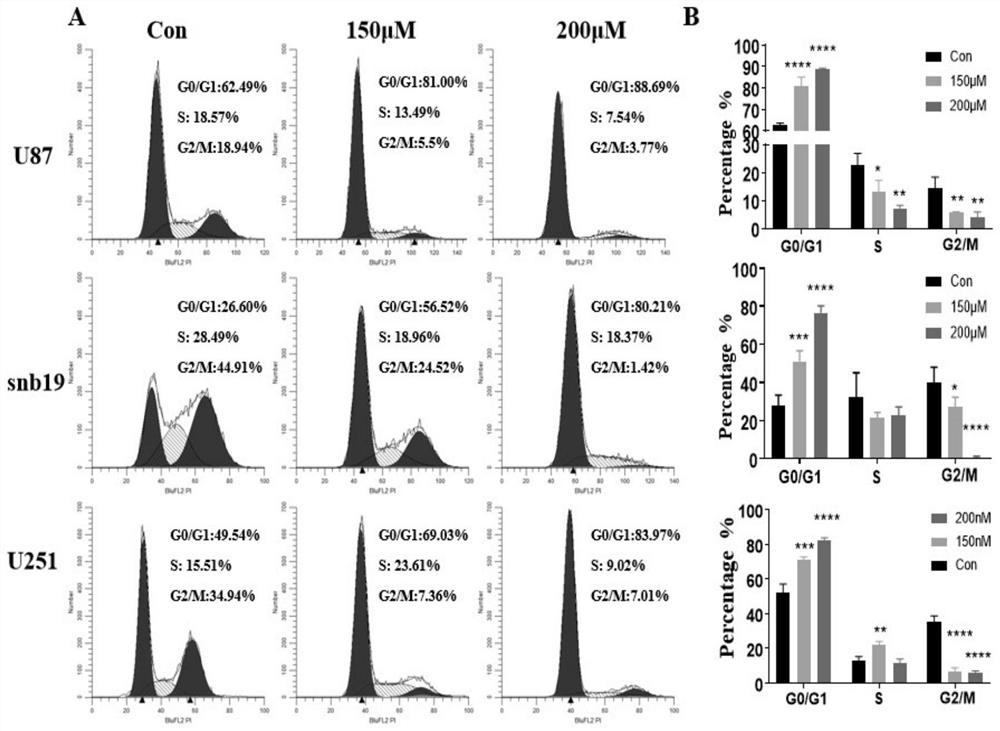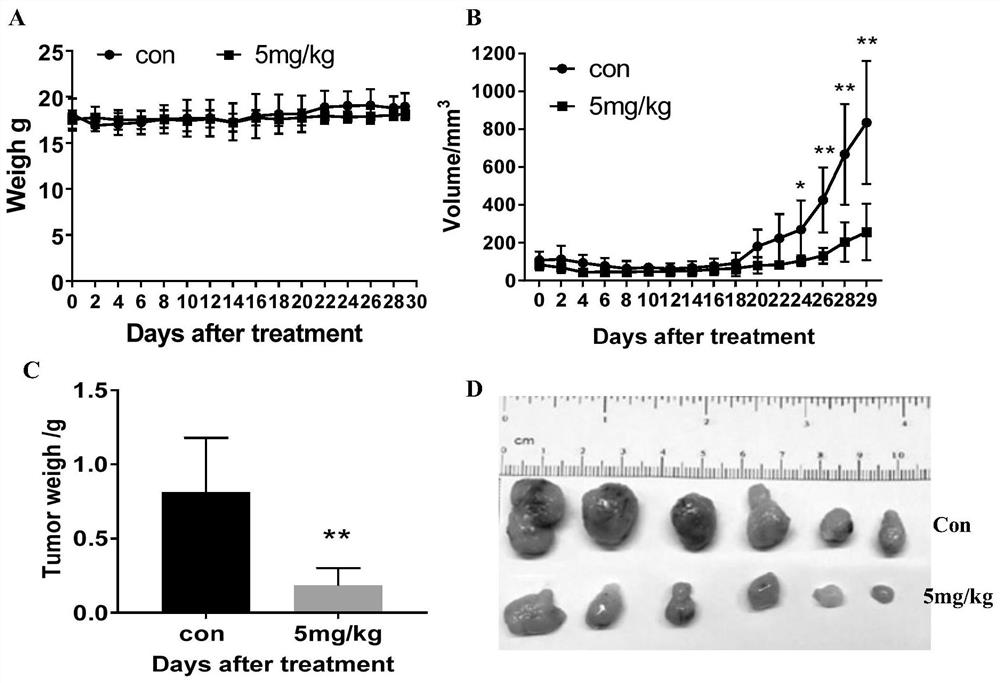Application of PDE4 inhibitor in preparation of medicine for inhibiting glioma proliferation
A glioma and inhibitor technology, applied in the field of anti-tumor drugs, especially glioma drugs, can solve problems such as no research and verification, and achieve the effects of small side effects, good development and application prospects, and strong specificity
- Summary
- Abstract
- Description
- Claims
- Application Information
AI Technical Summary
Problems solved by technology
Method used
Image
Examples
Embodiment 1
[0031] Example 1: The effect of ZL-n-91 on the inhibition of glioma cell proliferation was detected by CCK8 method.
[0032] 1) Take the glioma cells U87, snb19, and U251 in the logarithmic growth phase to prepare a single cell suspension. 100 μL cell suspension per well (containing 2~3×10 3 cells) were inoculated in a 96-well plate, and were divided into 9 groups: complete cell control group, solvent control group 0 μM, 25 μM, 50 μM, 100 μM, 200 μM, 250 μM, 300 μM, 400 μM, 500 μM, 600 μM, 800 μM, 3 in each group Auxiliary hole;
[0033] 2) 24 hours after plating, after the cells were completely adhered to the wall, different concentrations of ZL-n-91 were added to each group, and the cells were cultured for 48 hours;
[0034] 3) Add 10ul of CCK-8 solution to each well to avoid air bubbles;
[0035] 4) Continue to incubate the cells for 1-2 hours, take out the culture plate, and measure the absorbance of the cells at 450 nm with a microplate reader. And calculate the cell ...
Embodiment 2
[0037] Embodiment 2: Flow cytometry detects the impact of Zl-n-91 on the distribution of glioma cell cycle
[0038] 1) Take U87, snb19, and U251 cells in the logarithmic growth phase, resuspend them with serum-free basal medium, and use 2*10 5 cells / ml were inoculated in 6-well culture plates, cultured in an incubator, and starved for 24 hours;
[0039] 2) After 24 hours, add serum and test drug concentration ZL-n-91 (150 μM, 200 μM) respectively, and set a solvent control group at the same time, and continue to culture the cells for 24 hours;
[0040] 3) After 24 hours, the cells were collected, washed twice with pre-cooled PBS, and prepared into 1×10 cells with PBS. 6 cells / mL of cell suspension, add 1ml of 70% absolute ethanol, and fix at 4°C or -20°C for more than 24h;
[0041] 4) Centrifuge, wash twice with cold PBS, add 500 μL of PE staining according to the kit instructions, gently vortex the cells, incubate at room temperature in the dark for 15 minutes, test on the ...
experiment example 3
[0043] Experimental Example 3: Detection of Zl-n-91's Induction of Apoptosis in Glioma Cells by Flow Cytometry
[0044] 1) Take U87, snb19, U251 glioma cells in the logarithmic growth phase, and use 1.5-2*10 5 cells / ml inoculated in 6-well culture plate;
[0045] 2) 24 hours after plating, after the cells are completely adhered to the wall, add the experimental concentration of ZL-n-91 (150 μM, 200 μM, 300 μM) respectively, and set a solvent control group at the same time, and continue to culture the cells for 48 hours;
[0046] 3) Harvest the cells after 48 hours, wash twice with pre-cooled PBS, and prepare 1×10 cells with 1×Binding Buffer 6 cells / mL cell suspension, take 100 μL in the flow tube, add 5uL 7-AAD and 5uL PE staining according to the kit instructions, gently vortex the cells, incubate at room temperature in the dark for 15min, then add 200uL 1×Binding Buffer to the tube In the middle, the flow cytometric detection was carried out within 1 h, and the results wer...
PUM
 Login to View More
Login to View More Abstract
Description
Claims
Application Information
 Login to View More
Login to View More - R&D
- Intellectual Property
- Life Sciences
- Materials
- Tech Scout
- Unparalleled Data Quality
- Higher Quality Content
- 60% Fewer Hallucinations
Browse by: Latest US Patents, China's latest patents, Technical Efficacy Thesaurus, Application Domain, Technology Topic, Popular Technical Reports.
© 2025 PatSnap. All rights reserved.Legal|Privacy policy|Modern Slavery Act Transparency Statement|Sitemap|About US| Contact US: help@patsnap.com



